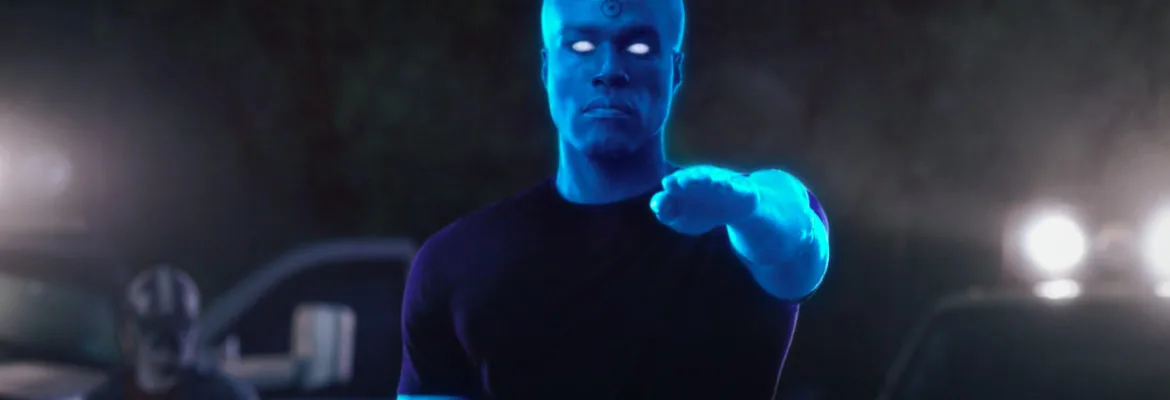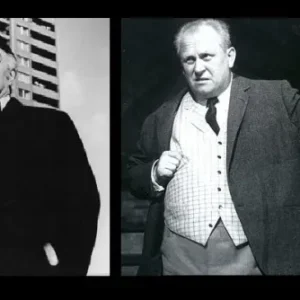How ‘Watchmen’ Brought Dr Manhattan’s Experience Of Time To Life
Watchmen’s eighth episode delivered yet another unique take on the superhero origin story. Now, learn how the writers, director, and star, Yahya Abdul-Mateen II, pulled off one of the show’s more complex episodes.
It’s no surprise Damon Lindelof was attracted to ‘Watchmen.’ Alan Moore and Dave Gibbon’s graphic novel features mind-bending concepts that Lindelof likes to explore in show’s like ‘Lost’, and ‘The Leftovers.’
The creative duo behind the comic blended social issues, politics, philosophy, and science with fantasy. HBO’s show follows the graphic novel’s dictum of using fantasy as a platform to explore social issues, politics, philosophy, and science. While the specter of nuclear war loomed large over the graphic novel’s story in the ’80s environment it was set and published in, Lindelof has chosen racism and representation as the primary issue to explore in this sequel of sorts to Moore and Gibbon’s story.
For episode eight, entitled “A God Walks Into A Bar”, Lindelof, and fellow writer Jeff Jensen, chose “The Watchmaker”, the fourth issue of the graphic novel. Specifically, they wanted to bring Dr Manhattan’s perception of time explored in that issue, to the small screen. Dr Manhattan, God-like in his abilities experiences past, present, and future all at once. A tricky proposition to say the least.
To make this work, Lindelof and Jensen weaved the story into two timelines. A linear timeline, that us humans are used to, was needed to help explain Dr Manhattan’s omnipresent perception of time. This linear timeline occupies the majority of the episode taking place in a simple set up: a largely dialogue-driven conversation between Angela Abar (Regina King) and Dr Manhattan across a table in a bar in Vietnam.
Inter-cut throughout this conversation is another timeline viewed from Dr Manhattan’s perspective of time. Aided by Dr Manhattan’s explanations to Angela, the episode does a pretty good job of showing us his omnipresent experience of time as it zooms back and forth key events in his timeline.

While we’re transported to some pretty wild and epic sequences including Dr Manhattan’s creation of the estate on Europa, the episode is, at its heart, more personal. Over the course of an hour, a romance blossoms between Angela and Dr Manhattan as they talk in that bar. By the episode’s end their story is a tragedy as Dr Manhattan is teleported to an undisclosed location by the Seventh Kavalry.
The penultimate episode is yet another example of the unique take on the superhero origin story which has appeared throughout the HBO series. The first episode’s cold open gave us a Krypton-like escape story for Hooded Justice’s father as his parents secreted him away in the back of a car. The sixth episode gave us Hooded Justice’s origin story lived through the eyes of his grand-daughter after she swallowed his nostalgia pills.
But the eight episode gives us an even more complex story which leads to the shock reveal that Cal Abar is Dr Manhattan. It’s a bold move, that risked potential fallout among fans of the graphic novel. The disappointment from die-hard purists aside, the decision could have been forced, but instead the episode demonstrated some of Lindelof’s trademark, mind-bending storytelling. Let’s face it, Dr Manhattan isn’t the usual superhero. He’s blue-skinned, immortal, all-seeing, and all-powerful. With his ability to shape matter, destroy or create anything with a thought, changing bodies from the German human form of Jon Osterman he was born in, to the deceased shell that became Cal Abar isn’t a stretch in the world of ‘Watchmen’.
Nicole Kassell Explains Directing Challenges
Tasked with bringing these two timelines to the screen, including that shock reveal, and crafting a believable romance within this improbable premise was executive producer, Nicole Kassell. This was her third time in the director’s chair for ‘Watchmen’. But the episode posed a “challenge” for her too, which she outlined on Instagram.

Translating what’s written on the page into a believable interaction between two actors wasn’t so straight-forward for Kassell, especially when one of the characters is painted blue with a blue face mask on. It’s difficult territory to navigate. There is a lot of weirdness in Watchmen that is played straight. But ultimately the whole sequence in the bar came down to the actors performance.
King wanted to capture the persona of Angela ten years in the past. It’s the anniversary of her parents death, and she wants to be alone. Kassel said “it was a really fine line to tread” to get Angela from wanting to be alone to agreeing to have dinner with Dr Manhattan. The last thing she wants is to be hit on, especially by a man claiming he is Dr Manhattan, who Angela sees as responsible for her parents death. But as Kassell explained to The Hollywood Reporter that King and Abdul-Mateen II made it work over a tough three-day shoot in the bar:
Asking them to be off-book for eight to 12 pages per day so we could film sometimes three scenes from the same camera angle back-to-back-to-back…we really had to treat those pages almost as a piece of theater. It’s hard. It takes a lot.
In addition, Kassell and her crew, had to find fresh ways of crafting a reaction shot in the scene, since Dr Manhattan’s face is hidden throughout the entire conversation. “To me, making it a visual medium is essential,” she explained. “[A]nd that was handcuff upon handcuff upon handcuff. It was really fun to take that challenge on, though.”
Ultimately the constraints helped with the shock reveal in the morgue when Dr Manhattan assumes Cal’s form. It’s to Kassell’s credit, and the performances of both King and Abdul-Mateen II, that the scene is touching rather than creepy.
Getting the look of Dr Manhattan right was another challenge. Kassell explained the process:
It was really about finding the right material, so the texture looked correct, and the right shade of blue. We wanted to play with it. We wanted Yahya to wear white contacts, but they were very inhibiting to performance and comfort. But once we saw him in the blue, the power of his eyes in that? It was overwhelming. It really astonished all of us. Quite early on, we decided that when his eyes went white, it would be a visual effect, and that we would only do that when he was activating his powers, whether making the kids vanish, making waffle ingredients float or blowing people up. (Laughs.) It’s pretty funny, all the things he can do. He can walk on water!
In addition, she did multiple rehearsals with Abdul-Mateen II to find the appropriate body language, and voice for Dr Manhattan. “We talked at length about who he was, where he was. I made sure to spend that time with him in advance, so that when we were on set, he was already where he wanted to be. For me, it was about giving him very subtle notes at that point. He took phenomenal care and effort with this character.”

For the visual effects shots, which Kassell admits was her “biggest unknown” filming this series, she returned to the source material. Just as Lindelof had based the episode off issue four, so too did Kassell use the issue for visual cues.
The script and the structure of the storytelling was absolutely deliberate, a direct homage to that issue. For me, I always pored over the book, looking for images from that chapter, but also scenes set at Eddie’s bar, because we are in Eddie’s bar [in this episode]. Also, when he goes to Karnak [in the final issue], I paid close attention to the imagery of Doctor Manhattan. Those exterior shots of him arriving at Karnak are a direct homage to the book.
Though Alan Moore has expressed his disapproval over Lindelof’s interpretation of his graphic novel, each episode has taken great pains to honor the source material, while simultaneously taking a fresh approach. At least with audiences, this approach has proved successful.


